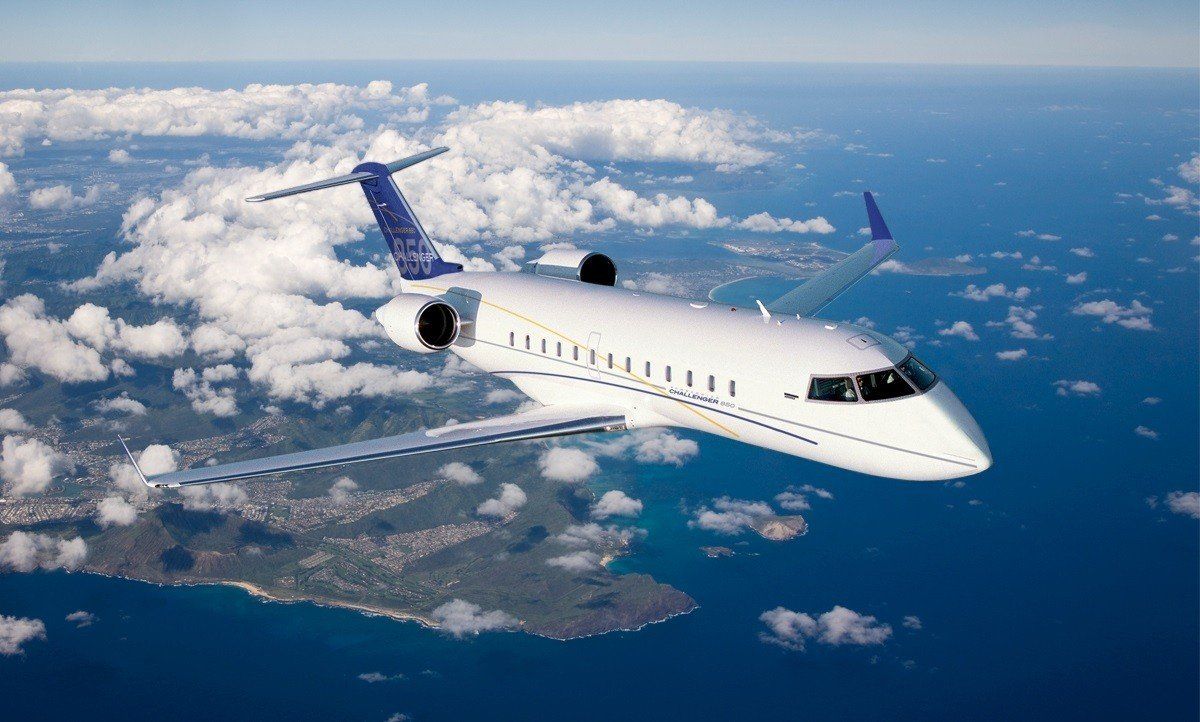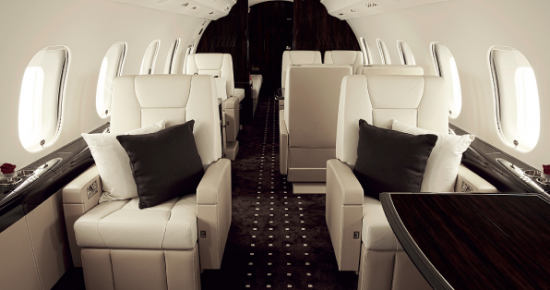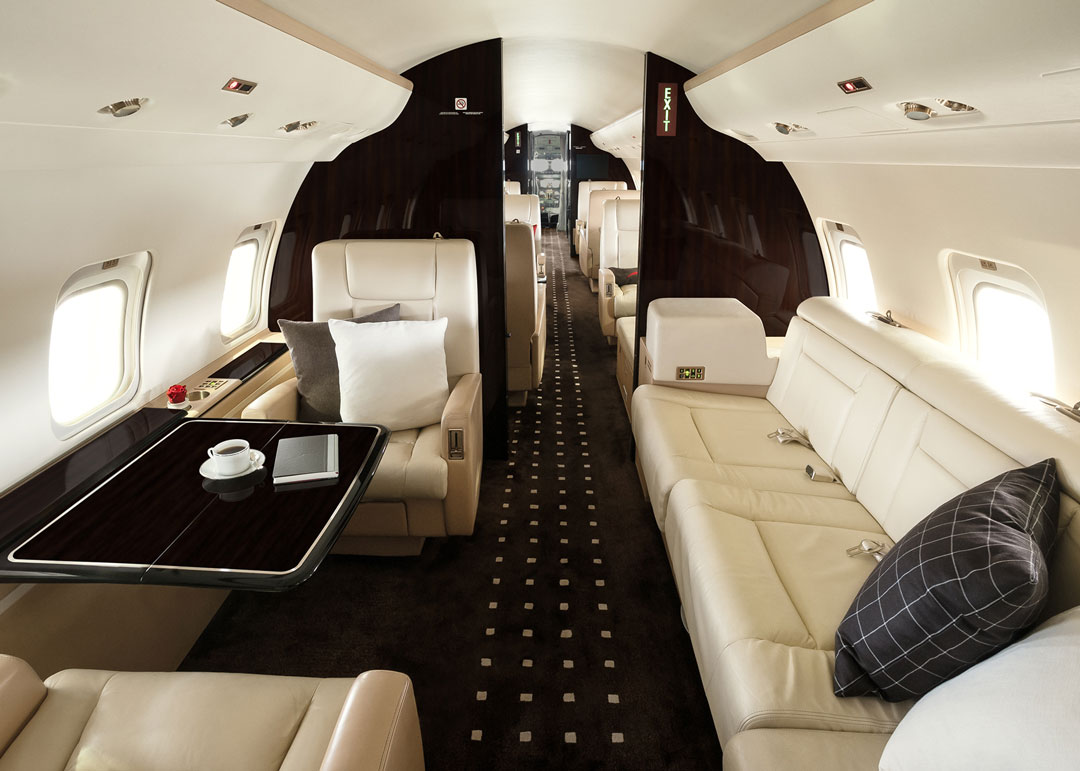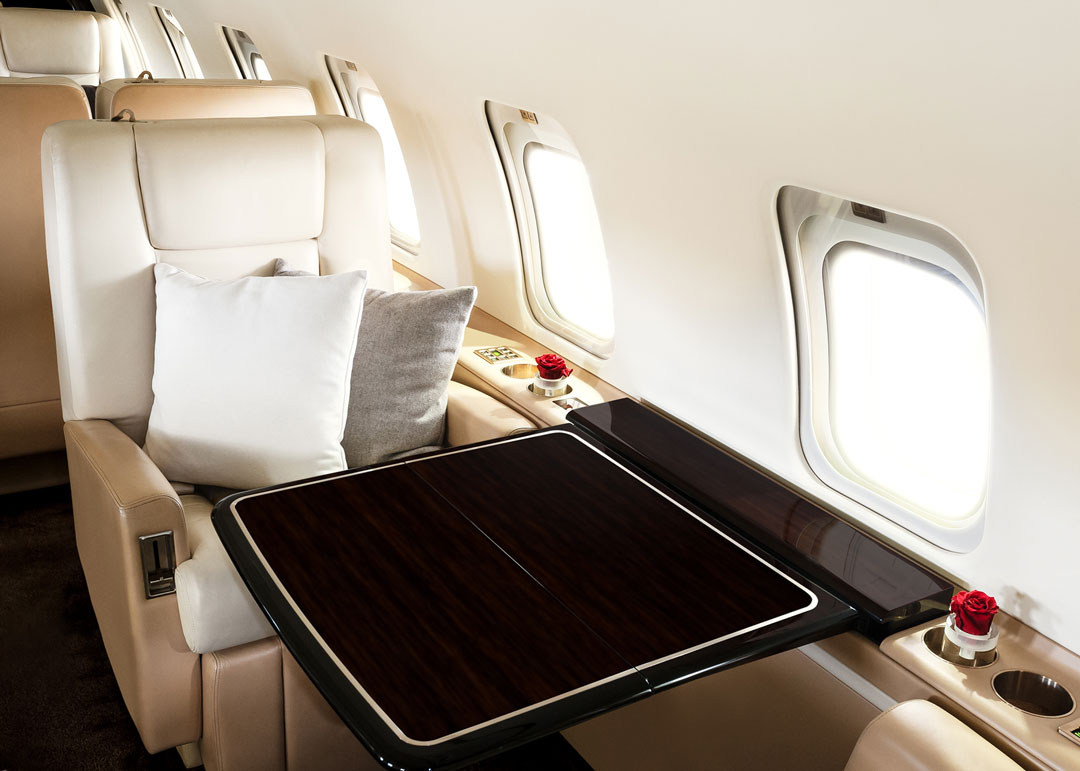Known as a heavy jet, the Challenger 850 has become a star amongst European clients thanks to its spacious cabin. Manufactured by Bombardier in Canada, the aircraft can carry up to 16 passengers depending on its configuration.
Due to its limited range, Challenger 850s failed to gain wide market share in the US. Yet this range limitation doesn't affect performance in Europe for which it provides a more price-efficient alternative to unnecessarily expensive ultra-long range aircrafts.

The Challenger 850 was developped on the basis of the regional CRJ 200 aircraft and made its first flight in August 2006. It can fly for up to 6 hours at a cruising speed of 820 km/h, giving it a range of 5,200 kilometers, roughly half of its Global and Gulfstream competitors.
Bombardier produced Challenger 850s up until 2015 and sold them at rates of near $32 million per unit, many of these are now available for charter in Europe. Despite its cabin being exactly as large as that of ultra-long range aircrafts such as Globals, Falcon 7Xs or Gulfstreams, the Challenger 850 sold for half their prices, which today translates to significantly lower charter prices in Europe for the same cabin sizes.
Indeed, whilst Globals for a 3-hour flight from Moscow to Nice can cost near €30,000, a Challenger 850 would be closer to €20,000 despite its cabin size being identical. This is thanks to cheaper acquisition costs for jet operators due to the plane's limited range.

The vast majority of Challenger 850 aircrafts have 3 cabin sections. Normally these are divided into a 4-seat arrangement at the entrance of the cabin, followed by a middle section with 4 seats around a dinning table and either 2 additional seats on the side or a couch. The rear section typically has 2 seats and a 3-seater couch.
AV systems onboard these aircrafts vary depending on the operator, however usually there is a screen in each cabin section, which is normally set to showing the aircraft's flight plan. It is at the moment very rare for Challenger 850s to be equipped with onboard WiFi.
Typically, the main competition for these aircrafts at similar price points are Legacy 650s, manufactured by Embraer. Similar in seating arrangements and size, their cabin is slightly narrower and hence provide less volume than Challenger 850s.

Whilst these planes can land in the vast majority of European airports, some runways which are either not long enough or require specific takeoff/landing approaches such as London City won't let Challenger 850s operate. In some of these rare instances, Legacy 650s are able to fly.
An important aspect when it comes to aircraft purchase, airport flexibility doesn't affect the aircraft's charter viability since it will only be offered on routes where it can operate. It is however worth noting that in the event of airport closures or diversions, Legacies could offer more options, despite their smaller cabins.
At an equal price point between a Challenger 850 and a Legacy 650, the Challenger will offer a greater cabin volume and often becomes the obvious choice for charterers, unless there aren't many alternate airports in the area of your flight in case of a diversion. The standing of the operator can also often play an important role in the choice of the aircraft.

The aircraft cabin consists of two zones separated from each other, each of which is equipped with its own entertainment system. On board there is an own conference room, which is absolutely necessary for business aviation. Interior configurations differ from each other in the different arrangement of chairs and sofas.